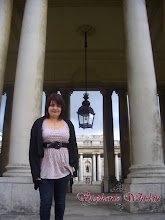Photography
Photography is the activity and art of creating still or moving pictures by recording light radiation on a sensitive medium such as photographic film or an electronic sensor. Photos are taken by light patterns reflected or emitted from objects which activate a sensitive chemical during a timed exposure. The Aperture (size of the pinhole) and the focal length (Length between the pinhole and the photographic paper) are key to make the photo, dividing them gives you the f-stop which determines the length of the exposure time. If this is not done then you could over expose or under expose the photo.
Making the pinhole Camera
Creating my pinhole camera was effective and easy. The first step that I had to take to create the pinhole camera was to get a light tight box, which in my case I used an old shoebox, but you could use something like a tin, or something which won’t let any light into the inside. After I found the shoebox, I had to paint the inside of the box with three coats of black paint, to ensure that any light that does get in doesn’t bounce around the box. Once the paint had dried I had to cut out a square about two centimetres into the side of my box. Now, as we all know, that isn’t a pinhole, but as soon all that was done I had to cut out a square of tin foil, from Mr. Kipling pie, the size of that square and then prick it with a needle. Once that is done, I stuck it into the box with duck tape, making sure that no light could come though, a part from though that pinhole. Then I had made a flap for the front so that I could travel to the location I wanted to photograph without fogging up the light sensitive paper. Once that was done I had made my camera, the only thing that I had to do, was to put the light sensitive paper, in the box in the dark room, with double sticky tape, to keep it in place, then take the photo and then develop it.
Subscribe to:
Post Comments (Atom)


Well done Stephanie- your images are a very creative response to the week-long project. You've demonstrated an understanding of what was required during the project - however some more technical information - shutter speeds, aperture etc. would have helped the blog overall.
ReplyDelete